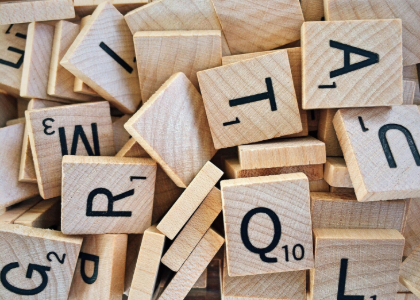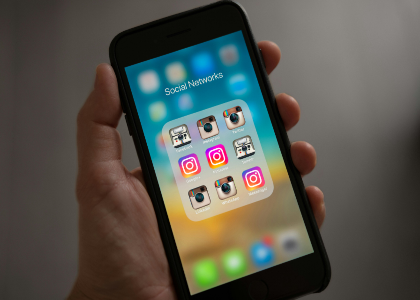Blog

Does Weird Work? A Creative Approach to Branding With Personality
Love them or hate them, weird logos can make a lasting impact. Many brands and designers don’t doubt that, so the real question is whether weird works the way it’s intended to. How do we take a creative approach to branding with personality without mucking it up? Let’s take a closer look.
Logos Make A Memorable Statement
Logos are visual representations of a brand identity, which means they should express a brand’s principles or mission statement. This needs to happen in a way that’s memorable and stands out from the crowd.
Looking at a few fine examples of weird, wonderful, and creative logos, we find some designs that are nothing less than iconic, and others that elevate logo design to an art form. All of them demonstrate beautifully that ‘weird,’ creative,’ and ‘unusual’ don’t mean unprofessional. They also show that there’s more to creative branding with personality than the font size.
Examples Of Creative Branding
Let’s delve into a few examples of creative or ‘weird’ logos and see what makes them so effective. You’ll recognize a few leading brands and institutions among them.
London Symphony Orchestra
Founded in 1904, the London Symphony Orchestra traditionally performs over 120 concerts annually. Based in the Barbican Centre in the UK capital, it’s one of the most recorded orchestras in the world. The logo uses a single line to form the letters LSO in a way that can instantly be interpreted as a conductor waving their baton. It’s elegant without being stuffy, and the flow of the design is evocative of the ‘flow’ of classical music.
Museum Of London
At first glance, the Museum of London logo appears to be the institution’s name superimposed on several colorful blobs of various sizes and shapes. However, there’s more to it than minimalism, trendy colors, and organic shapes. Each blob forming the logo represents the City of London at a particular point in its development. It’s nothing less than several ‘maps’ that show the growth of the city the museum is dedicated to. The logo’s impactful enough when you don’t know the meaning behind it, and unbelievably smart when you do.
I Love NY
Since 1977, the “I Love New York” logo has appeared in print, on screens, and in innumerable other ways to promote tourism to the Big Apple. Milton Glaser designed the logo, which uses a red heart for the word “love”, with crayons on a scrap of paper in the back of a cab in 1976. The iconic logo is evocative enough to conjure up images of New York and its most famous landmarks in the minds of many people who see it, whether or not they’ve been there. It’s also simple enough to convey the attitude of “I love New York. What else is there to be said?”.
Society 27
Product collaborators Society 27 brings together multidisciplinary professionals, and its logo reflects the brand’s inspired approach to design. Pavel Pavlov used two single quotation marks and a single shape formed by a regular and an inverted 7 to create an ambigram. You can read the logo as 27 the right way up, or upside down.
Now we’ve explored a few creative logos, let’s unpack some creative branding ideas you can use to help inform your logo design process. We’ll also include a couple more examples of well-known logos.
Tips For Creative Branding
As you can see, much more than the choice of typeface or font size went into each of the logos mentioned above. They all cleverly use visual elements to tell a story. If you want to create branding with personality, these creative tips can guide you in the right direction:
Choose An Archetype
Draw inspiration from Jungian psychology for the storytelling element of creative branding and choose an archetype. Described as characters such as Sage, Innocent, Magician, Hero, and others, archetypes are universal models of personalities, behaviors, or traits.
The character should express the brand personality, but this doesn’t mean the logo design should incorporate a picture of that character. Rather, the archetype would influence the style, palette, and, yes, typeface and font size.
A good example of a brand that uses an archetype well is Taco Bell and its expression of the jester.
Consider Simple Storytelling
One reason the storytelling element is so effective in the above examples is because it was kept simple. If they were to include an array of symbols, the logos would lose their ‘readability,’ as the message will be lost or confused.
The storytelling that happens through the branding should be about a central theme in the business or institution. That theme can be a defining value or feature, the country in which the brand originated, the founder’s story, or similar.
Use Subliminal Clues
Use subliminal clues in addition, or as an alternative, to incorporating elements of the brand story into your logo designs. A subliminal clue is directed at the subconscious mind of the target audience, rather than appealing to one of the five senses.
Also, rather than simply reinforcing the message conveyed by the rest of the logo, subliminal clues should be a call to action. To put this another way, the logo tells the brand story, and the subliminal clues make the call to action by associating the brand with a particular experience or emotion.
The Tostitos tortilla chips logo is an excellent example of the use of a subliminal clue. The second and third Ts look like two people sharing a chip over a bowl of dip, which is formed by the letter i. The subliminal clue here is that a bag of Tostitos is not just a bag of corn chips. It’s an experience that reminds you of good times with friends and family.
If you want to use subliminal clues in logo design, start by asking yourself what the brand wants its customers to do or feel when they see the logo. When you know what that is, ask yourself how the customers can match the action in the logo with the brand’s products or services. Then, think about where the logo will be displayed—will only be viewed on desktop computers or mobile devices? Or will it be printed on physical products, or marketing material. All of these elements will influence the design process.
In the Tostito’s example, the brand wants customers to feel party vibes and general bonhomie when they physically hold their product. How can they achieve that? By purchasing a bag of the chips (and sharing them with friends).
There’s no doubt that, when it comes to logos and branding with personality, weird and creative can work. It takes thought, effort, and creativity, but the results could become icons of modern design.
Author Bio: Editor at large and content monster, Alisa Taylor, shares awesome vibes and magic words wherever she drops her ink. She often focuses on business, graphic design, and education topics but is always looking to broaden her knowledge and expertise. On her off time, she loves hiking trails with her dogs or reading a great book with a glass of white wine.
More tips and tricks on the blog


